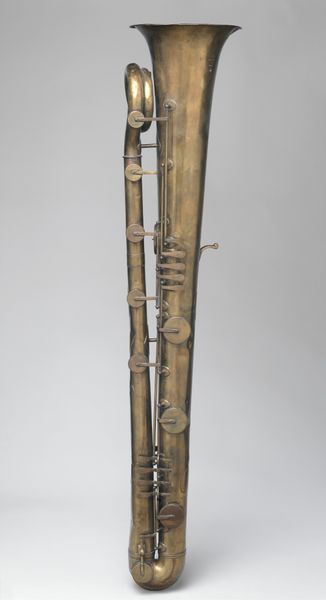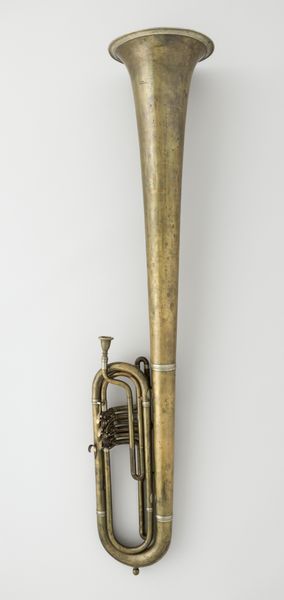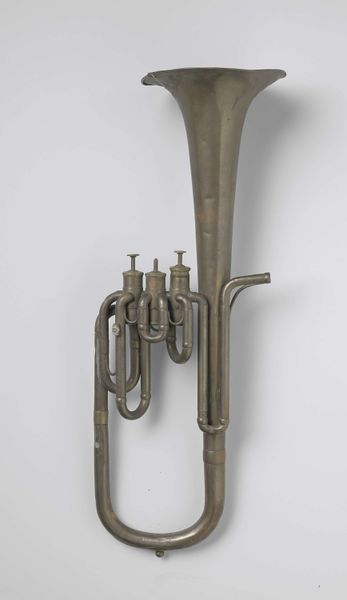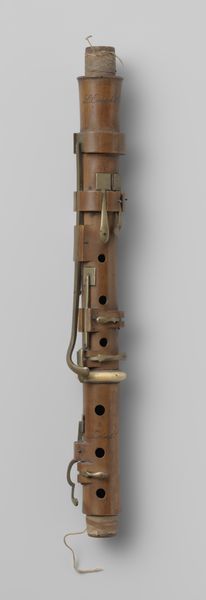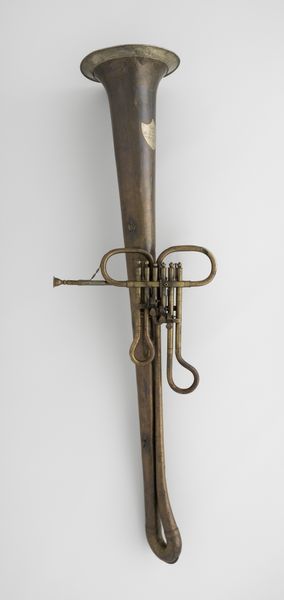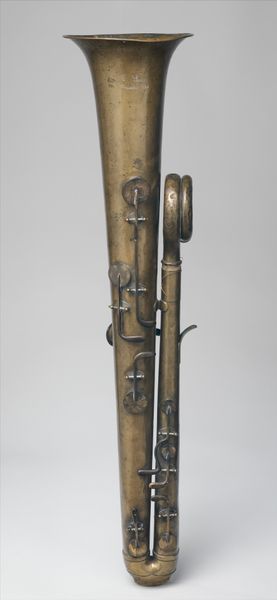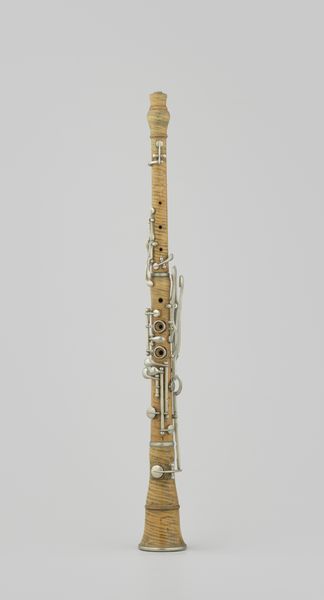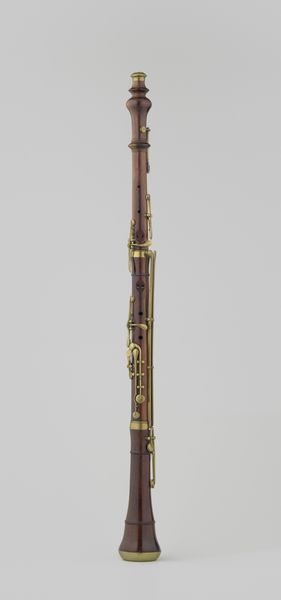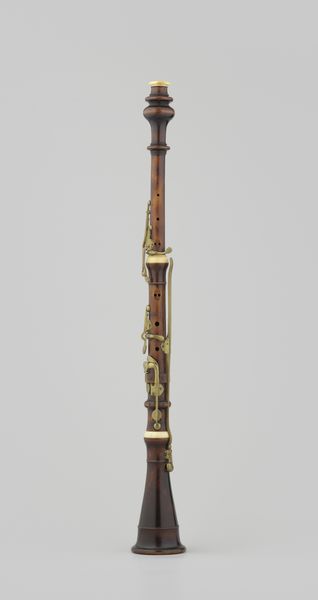
metal, bronze
#
metal
#
bronze
#
france
#
musical-instrument
Dimensions: Overall: 16.7 x 92.3cm (6 9/16 x 36 5/16in.)
Copyright: Public Domain
Curator: It's hard to resist touching this “Tenor (Alto) Ophicleide in E-flat”. A curious instrument crafted between 1830 and 1850 by the Couturier firm. A gleaming French sculpture that just happens to play music. Editor: My first impression is it resembles an elaborate key, perhaps one used to unlock a long-lost fairytale kingdom. Or perhaps a steampunk robot skeleton that has shed all the flesh. It evokes that sensation of rusty gears and musty air, of forgotten technologies, it somehow also strikes me as playful and serious simultaneously. Curator: Absolutely. Musical instruments as symbolic technology - I love that! I find these intricate metal keys and that gently flared bronze bell speak volumes about ingenuity of 19th-century craftsmanship and the evolving landscape of musical expression during this period in France. You find so much variety in instrument design. Editor: Right? I immediately want to know what the keys "unlock". Each little knob is practically begging for my touch, which of course, I know is forbidden. Imagine the sound… was it somber? Festive? The Victorians were masters of imbuing objects with emotion, weren't they? It feels deeply symbolic—the sound of a rising empire, or perhaps, a hidden melancholy within their grandiosity. Curator: That hidden melancholy probably scores it, I guess, like a great film. These wind instruments, beyond their practical use, represent entire eras. The ophicleide, though now almost obsolete, had a voice once integral to orchestras and bands. It speaks to the ephemerality of fame, doesn't it? Editor: Precisely. Every musical instrument tells a human story. We imbue each with so much yearning and intention that goes way beyond their physical design and function. I see longing and technical triumph melded, echoing and reminding that even shiny brass is temporary, always. Curator: Beautifully said. Makes you wonder what kinds of stories this particular horn could play us today, were it still alive. Editor: Definitely! I hope that people will consider the lasting visual and spiritual symbols, stories of past and present intertwined with our lives through art and design.
Comments
No comments
Be the first to comment and join the conversation on the ultimate creative platform.

